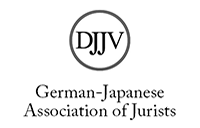Japan’s Corporate Governance Code 2015–2021
Legitimacy and the Transition from Principles to Prescription
Abstract
In 2015 Japan introduced its first corporate governance code for listed companies. This was presented as a principles-based code with the option either to comply with its principles or to explain reasons for non-compliance, and it was stressed that these were not rigid rules. Reference was made to the code’s complementarity to the Stewardship Code of 2014, implying that pressure from investors, rather than regulators, was expected to encourage implementation. The code appears to have been generally well received, despite signs of some purely outward compliance. However, in subsequent revisions of the code, in 2018 and 2021, the tenor of its requirements has changed. Despite officially continuing the principles-based style of the 2015 code, the subsequent reiterations introduced an increasingly didactic and prescriptive style. Also noteworthy is an increased emphasis on shareholder primacy and other elements commonly associated with US or UK governance models. This is especially evident in the 2021 revision, where certain provisions are now specifically linked to qualification for listing on the TSE’s new Prime Market, which was launched in April 2022, and explained as being of value in attracting investors. Moreover, in some instances, intrusive details of corporate organisation are now required to be disclosed. The overall impression is that principles are being put aside in favour of rules in order to channel Japan’s corporate governance towards shareholder primacy, while the code itself is becoming less of a codification of existing good governance practice and more of a goal to bring about the objectives that regulators seek.






